Sick or injured adult birds are frequently misidentified as babies, either because of their small size or their docile behaviour (a common symptom of a head injury in injured adults). Size alone is not a reliable way to differentiate adults from babies. Some adult birds are surprisingly small, and some babies are surprisingly large. It’s important to determine whether the bird you found is a baby or an adult in order to determine the best course of action to help them.
Distinguishing Baby Birds from Sick or Injured Adults
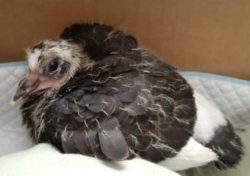
Size and maturity are relative to the species – this nestling rock pigeon isn’t old enough to walk around yet, but they’re already bigger than a lemon and weigh 120 grams
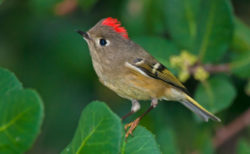
This fully grown ruby-crowned kinglet is only 9-11 cm long and weighs just 5-10 grams.
Baby bird or adult migratory songbird?
During spring and fall migration, TWC receives many calls about “baby” birds found near windows. The animal in question often turns out to be an adult bird who has hit a window on their migratory path and is docile and unable to fly due to sustaining a serious injury. Warblers, kinglets, and other small bird species are frequently misidentified.
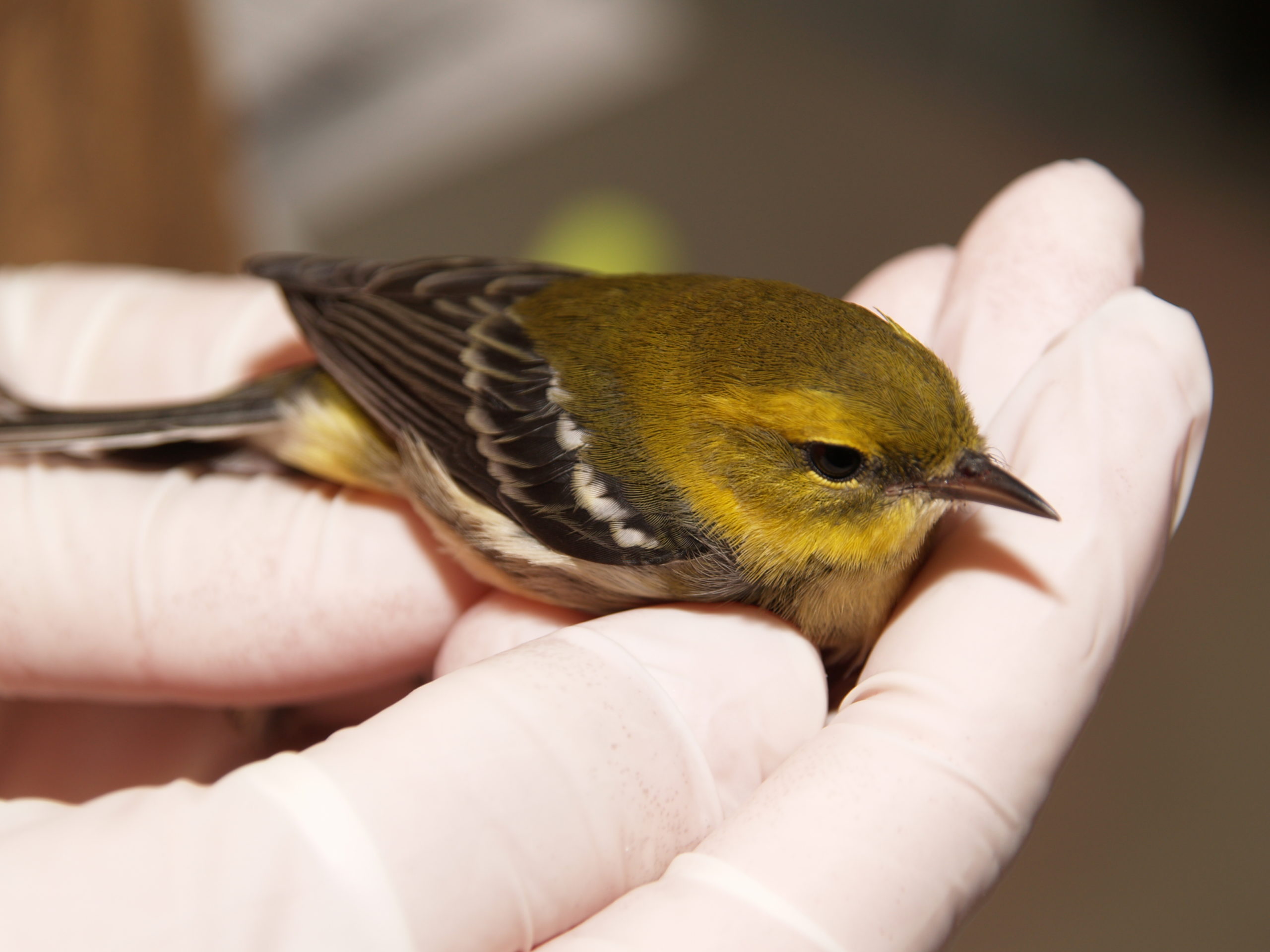
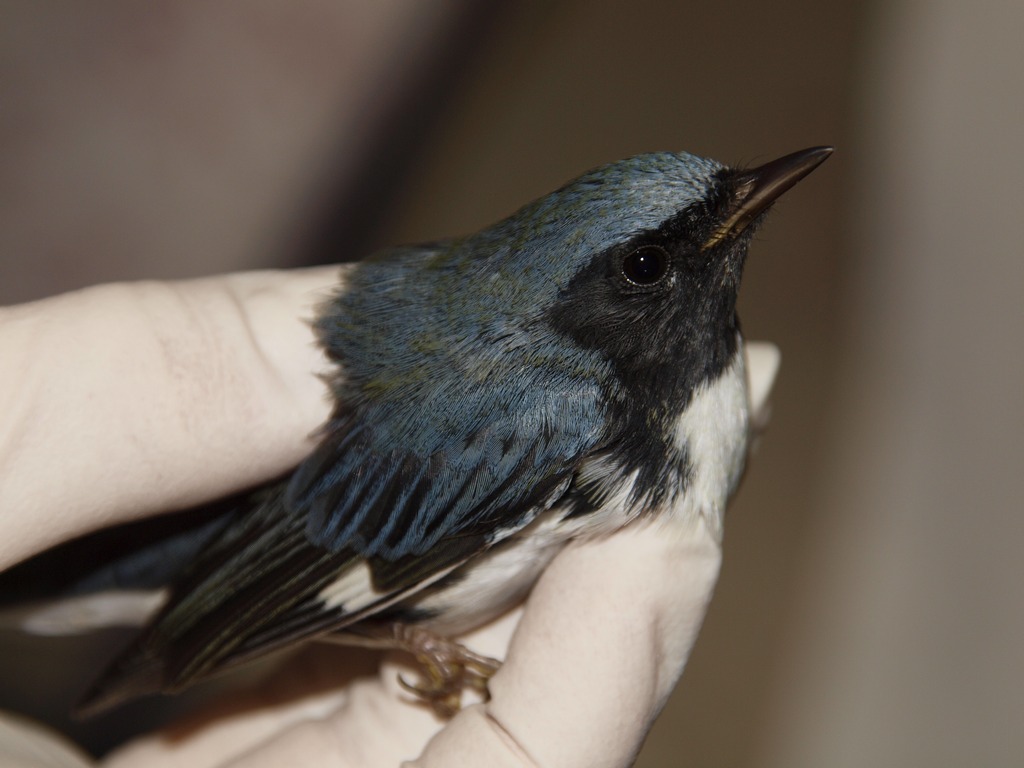
What are the physical differences between baby and adult birds?
1. Gape Flanges – Soft fleshy tissue, often white or yellow in colour, prominently at the sides of the beak on some species of baby birds – they look very similar to lips! Their purpose is to act as a sort of “bullseye” to indicate to the parents where to put the food. When they grow into adults and become self-feeding, the gape flanges are no longer visible.
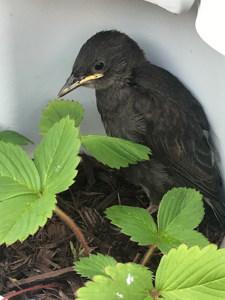
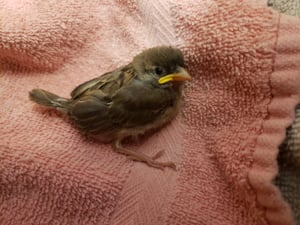
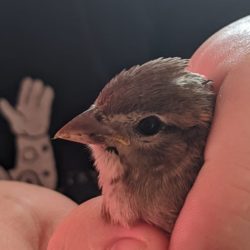
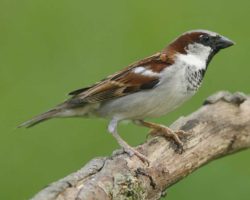
2. Feeding Behaviour – Further to the last point, younger babies will open their beak widely (gape) for food, while an adult bird would not engage in this behaviour (especially to a perceived predator such as a human!) Note: If a baby bird is gaping for you, do NOT give them any food or water until you’ve spoken with a wildlife rehabilitator as different species have specific needs and giving the wrong food, or feeding the wrong way could hurt them.
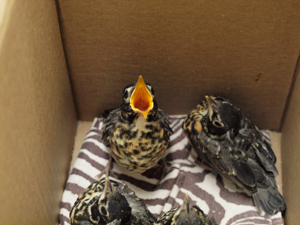
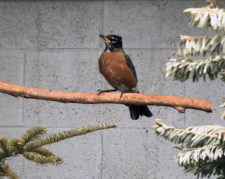
3. Vocalization – Baby birds tend to chirp continuously in order to alert their parents of their location, especially fledglings. Adult birds may sometimes vocalize when captured, but are not constantly vocal once caught, especially in the presence of a human (predator).
4. Length of Tail Feathers – Baby birds are still growing in their juvenile feathers, and the tail feathers usually take the longest to come in. Tail feathers that are shorter than the length of the body is usually an indication that the bird is still young.
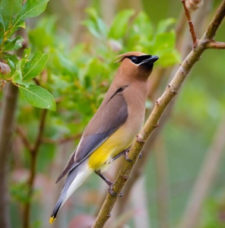
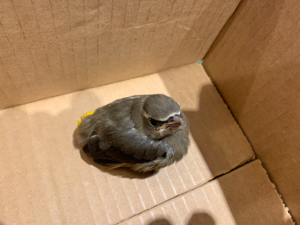
5. Down Feathers – Tufts of fluffy down feathers sticking out of the feathers may be an indication that the bird is young. In addition, the feathers that are still growing in on the body will give the baby a “ruffled” look compared to the sleek appearance of an adult bird.
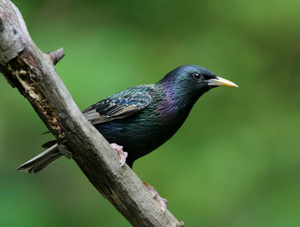
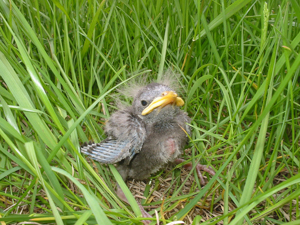
6. Colouring – In order to camouflage better, vulnerable baby birds will sport more drab brown and grey coloured plumage compared to the brighter and more contrasting colours of their adult counterparts. Though not all adult migratory birds match this description, birds that display vibrant colour on any part of their body are almost always adults. Adult warblers are often a combination of yellow, grey, and/or olive tones.
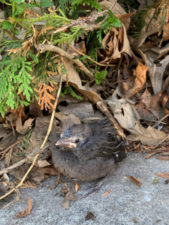
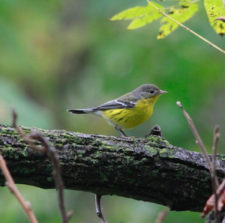
Not all baby birds will show these traits, but if none are present, they may be an injured adult.
>If the bird you found matches the description of a baby, click here
>If the bird you found matches the description of an adult, click here

